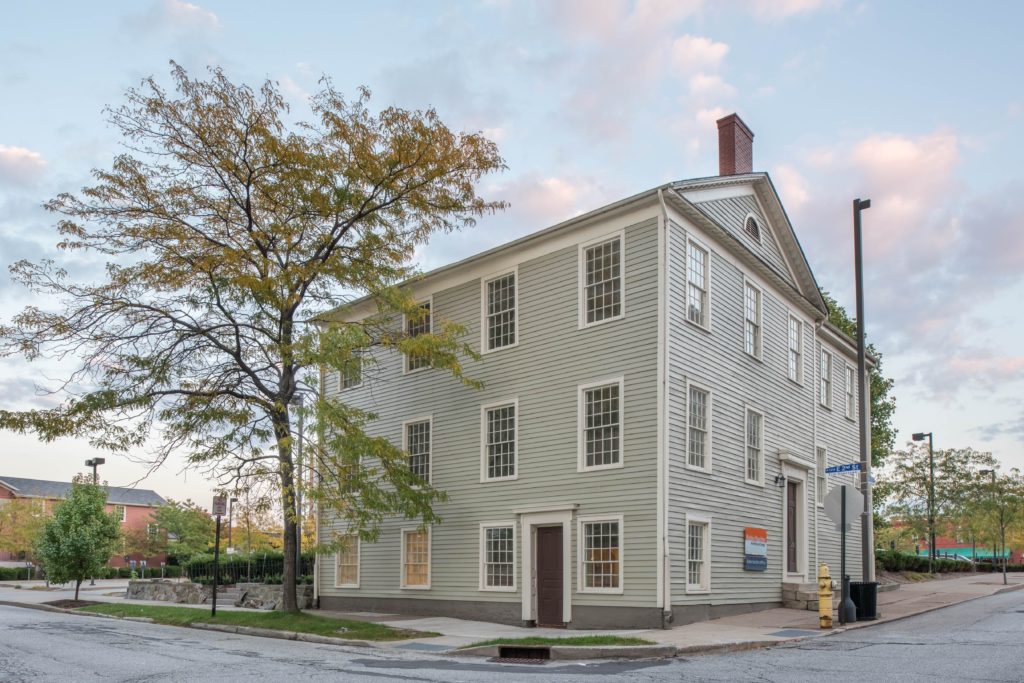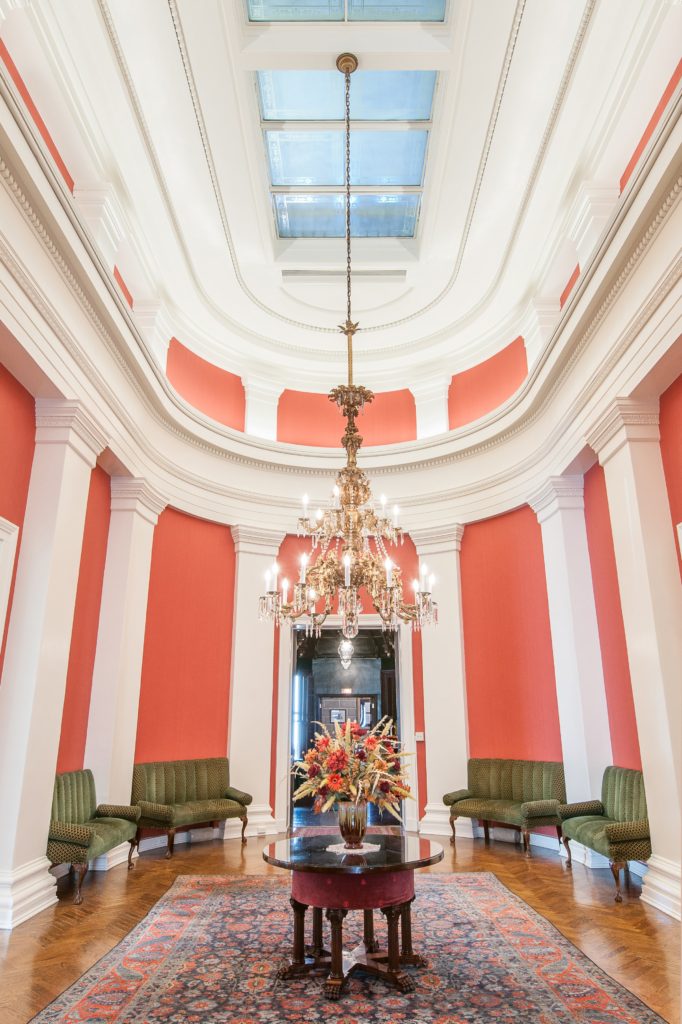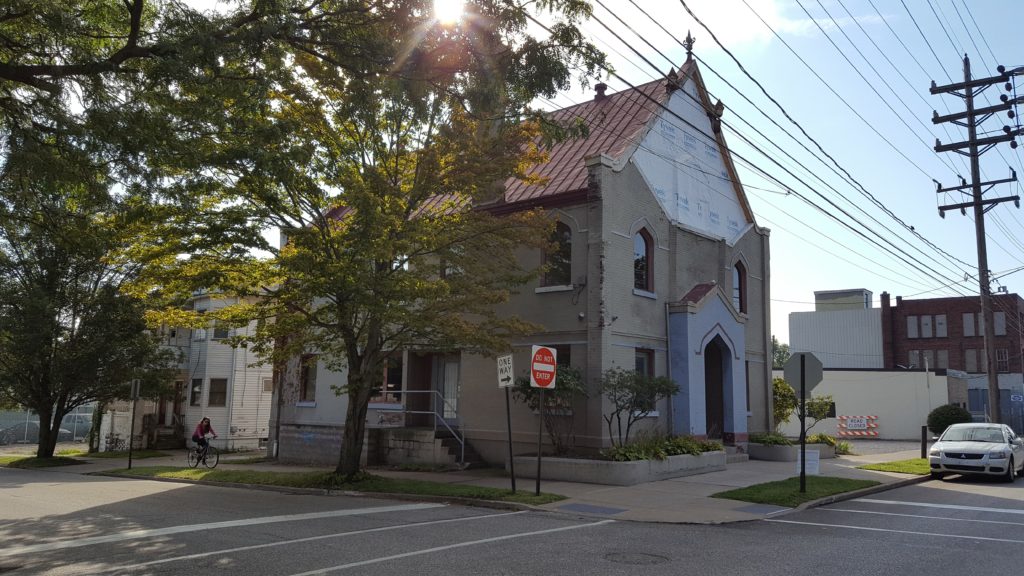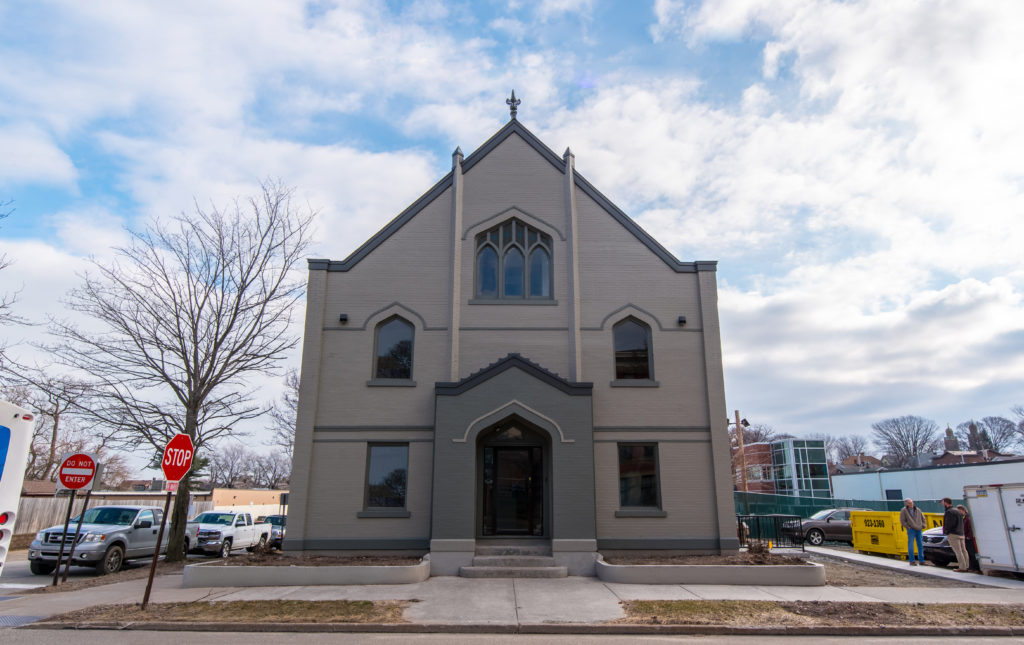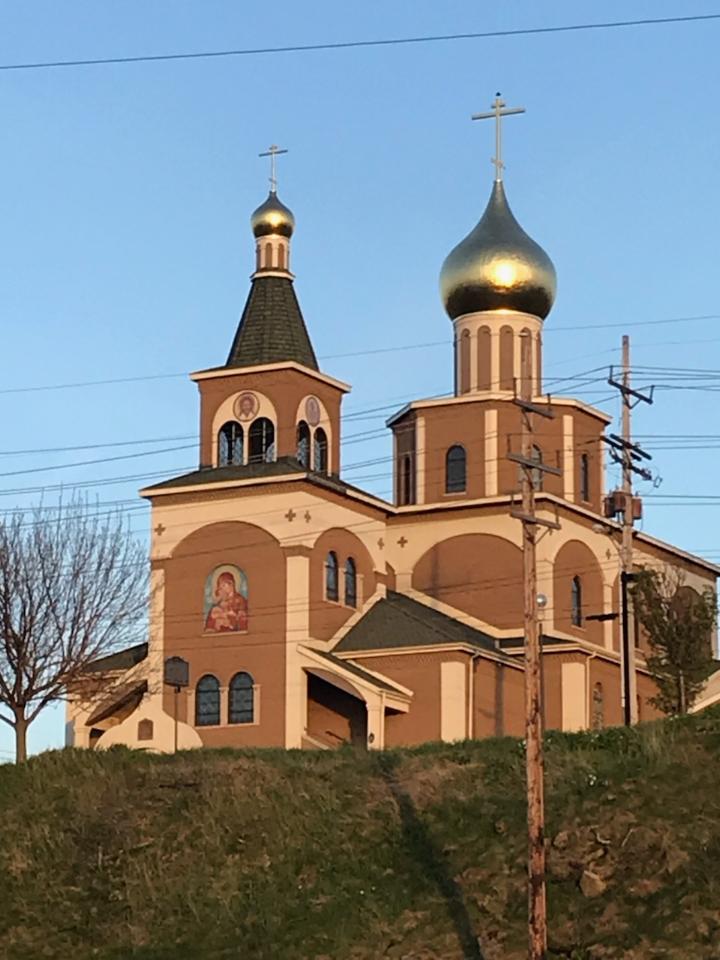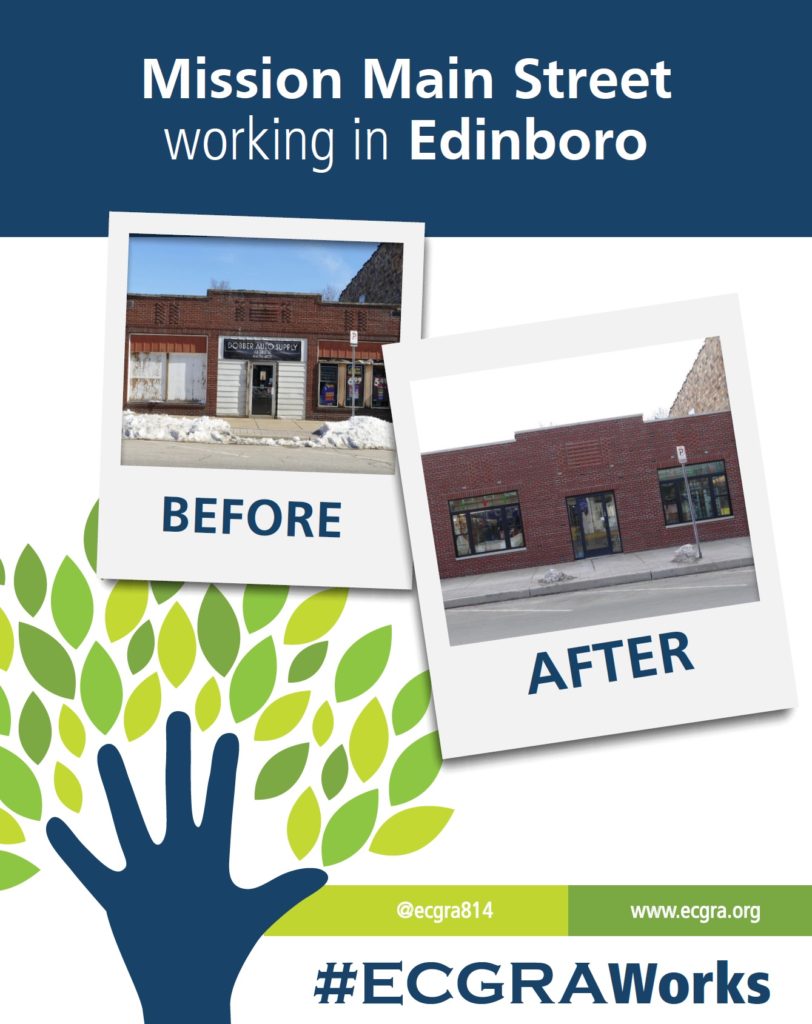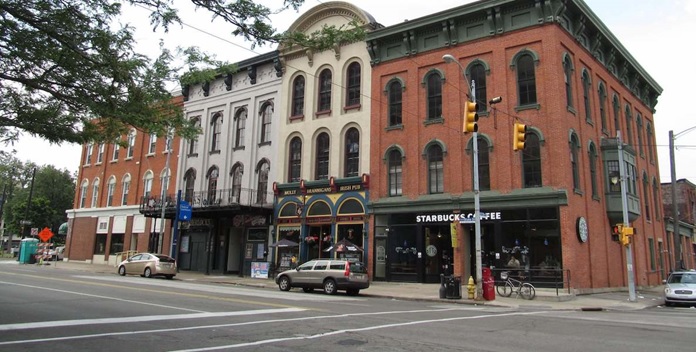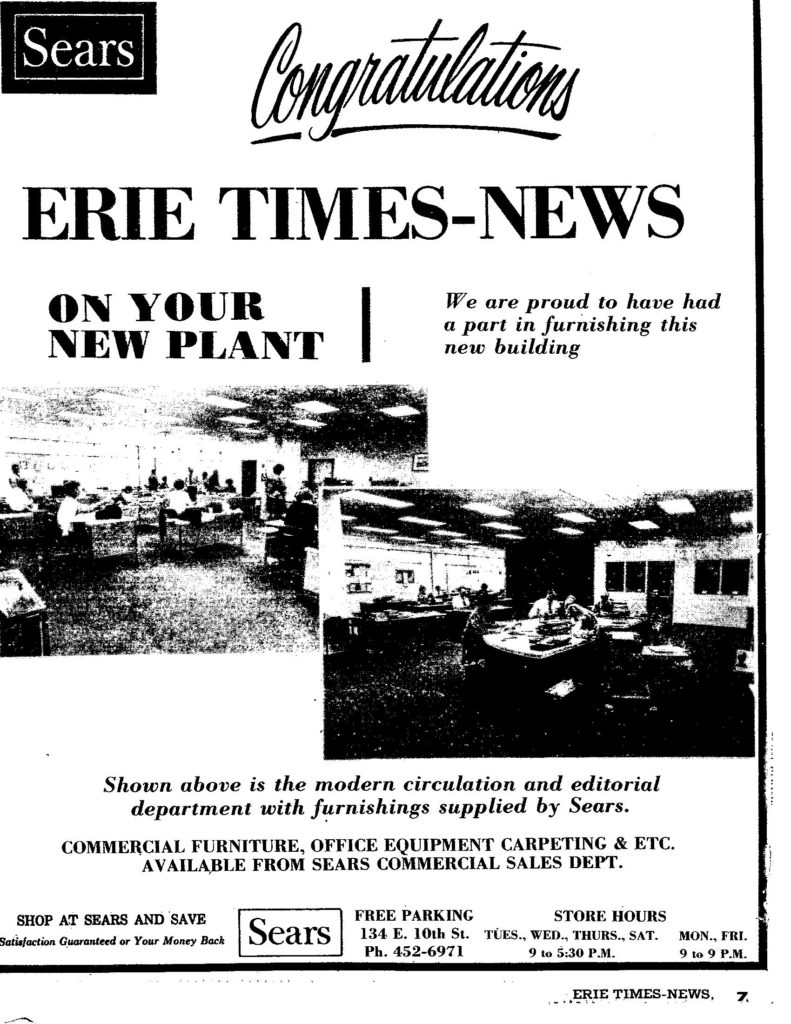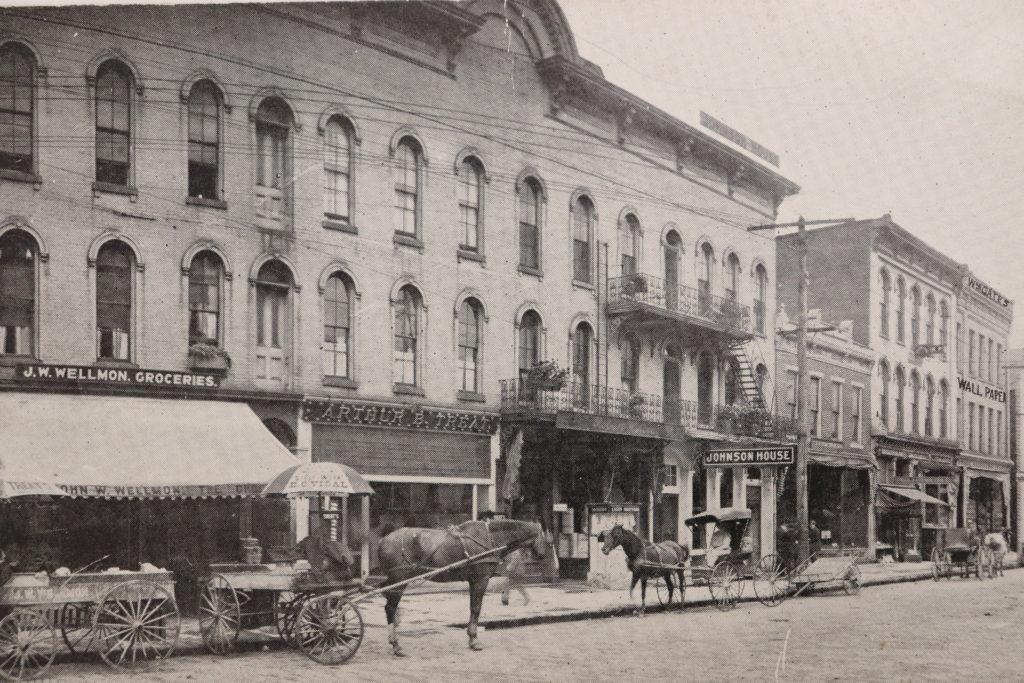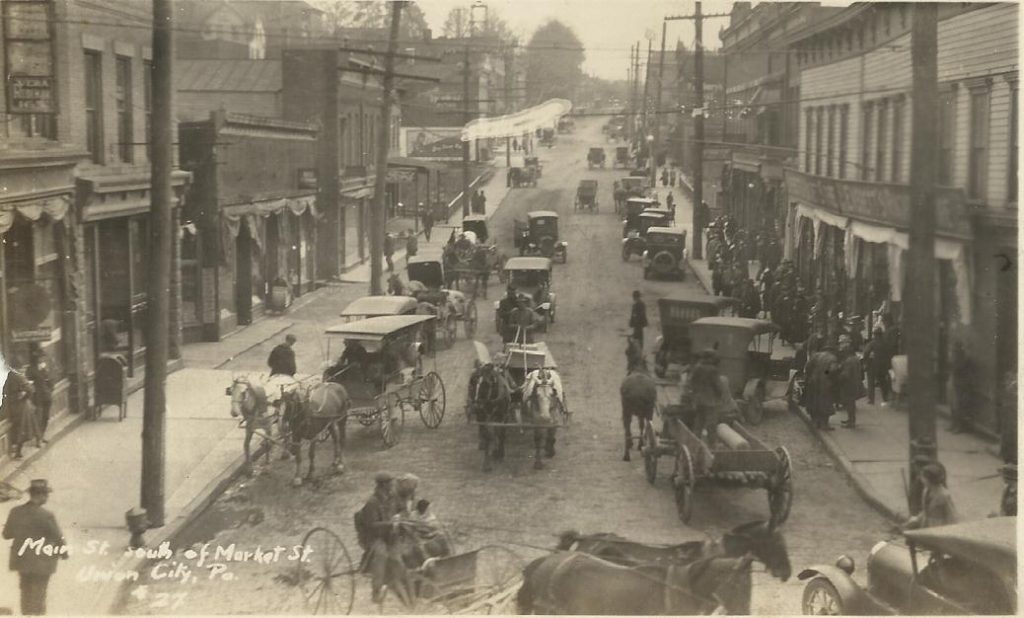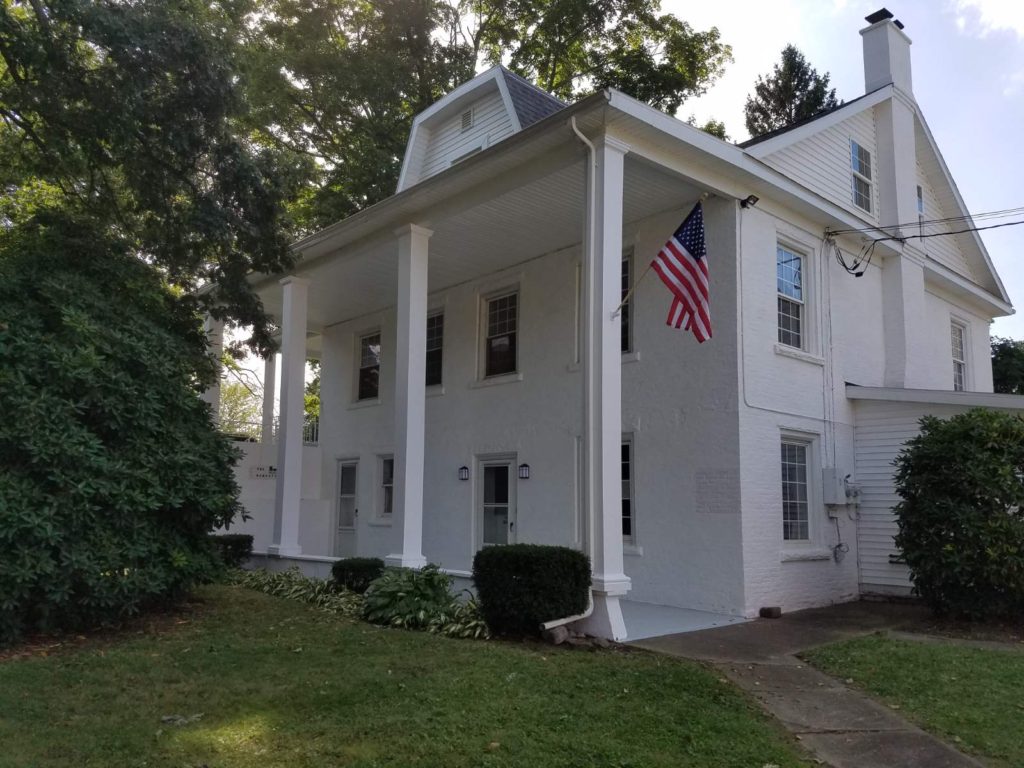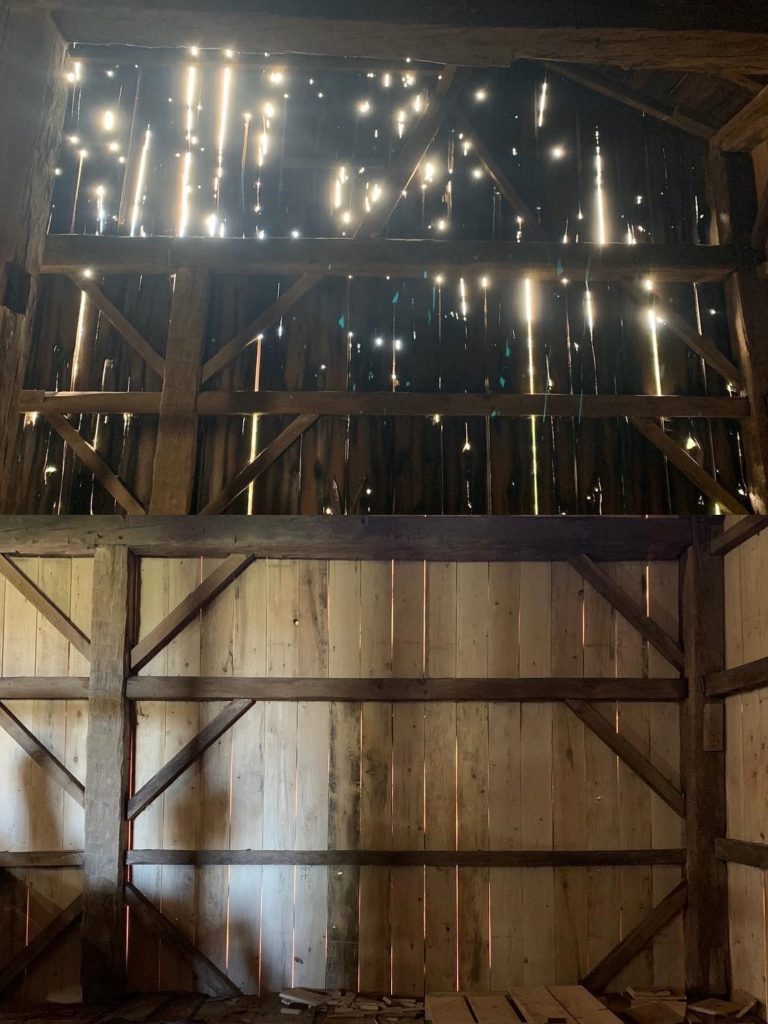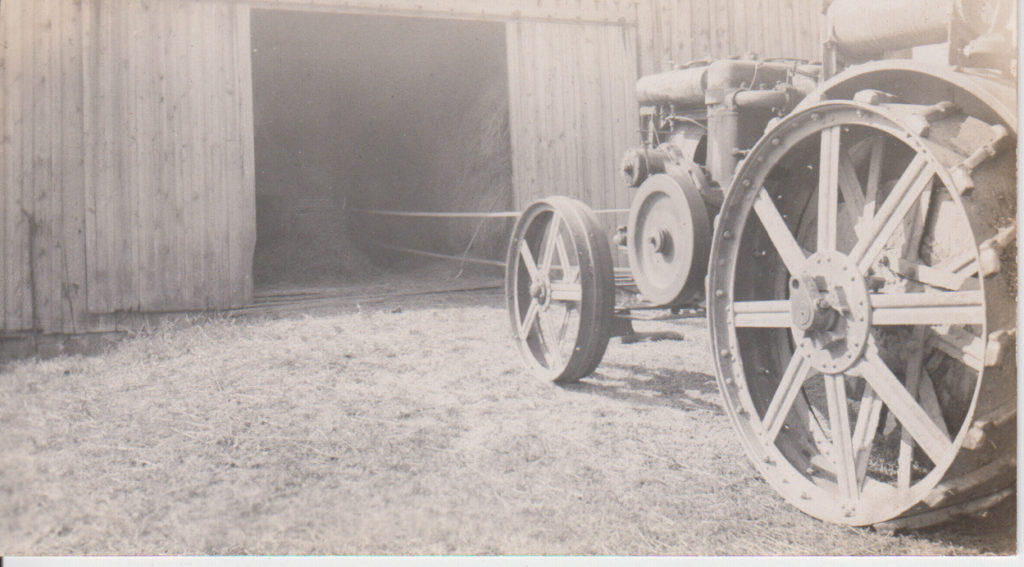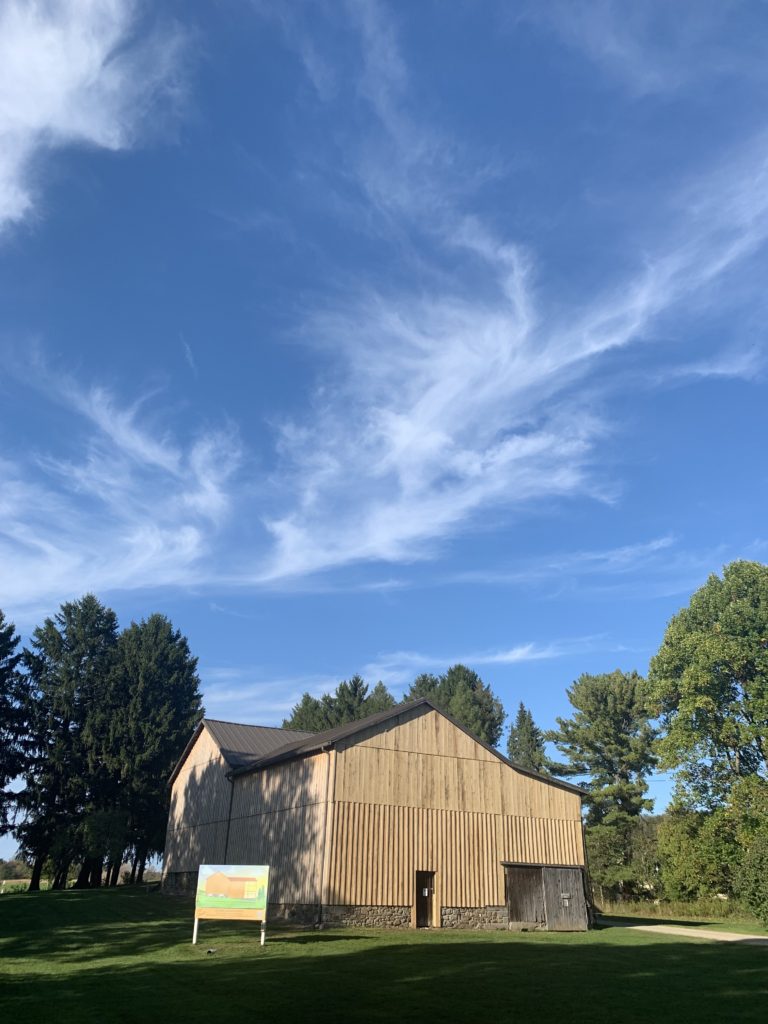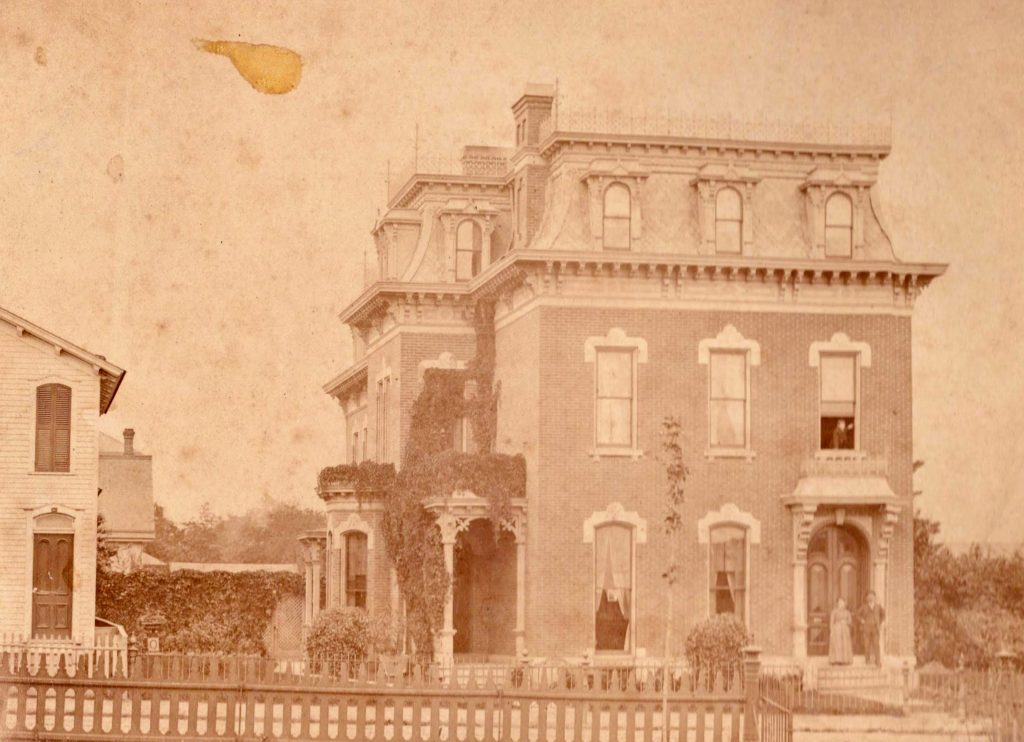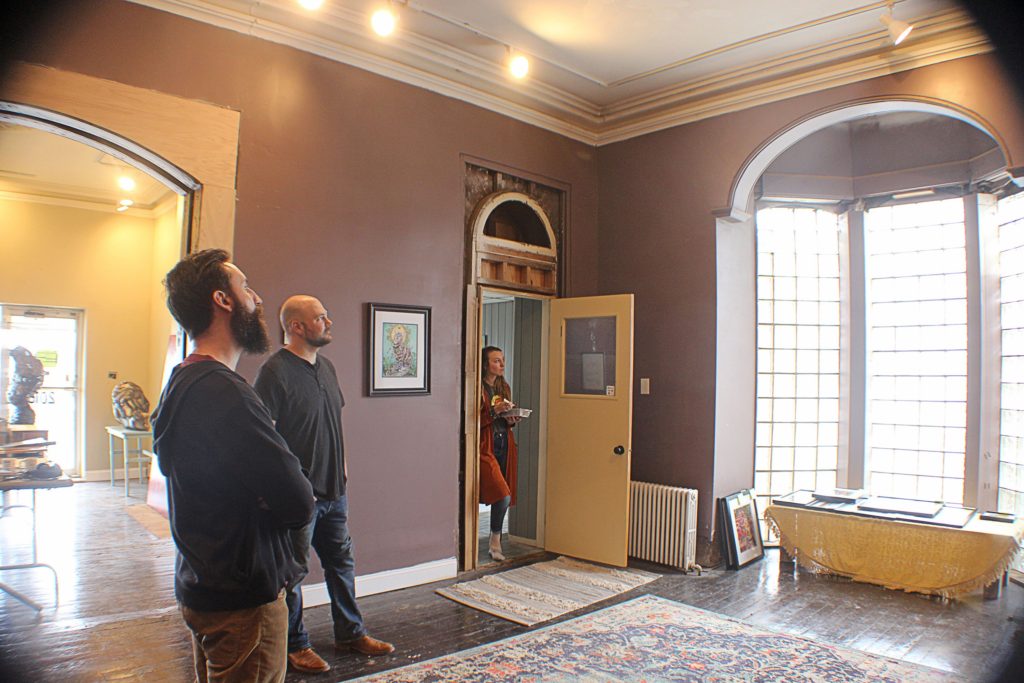2020 Greater Erie Award for Education and Advocacy
Preservation Erie honors the Erie County Gaming Revenue Authority with a 2020 Greater Erie Award for its increasing focus on preservation and design efforts throughout Erie County over the past decade. Through their provision of grant funds for communities and organizations, buildings in neighborhoods and downtowns throughout the county have been restored and preserved for future generations.
In an era when funding for historic preservation activities can be hard to come by, the Erie County Gaming Revenue Authority is a reliable source of local support for preservation work. Through their Community Assets, Mission Main Street, Anchor Building, and Renaissance Block Grant Programs (among others), the authority has provided 1:1 matching funds to historical societies, museums, municipalities, and neighborhood revitalization organizations for adaptive reuse projects, façade grant programs for commercial and residential property owners, streetscape initiatives, preservation planning, and more.
Passed in 2004, the Pennsylvania Race Horse Development and Gaming Act was designed to greatly benefit Pennsylvanians by ensuring gaming jobs and gaming revenue aid local organizations and residents.
Following the opening of Presque Isle Downs and Casino, the Erie County Gaming Revenue Authority was established in 2008 by Erie County Council and charged with administering municipal grants and serving as Erie County’s economic development authority, according to the Pennsylvania Race Horse Development and Gaming Act.
In Erie County, a full 1% of the annual gross revenue of Presque Isle Downs and Casino returns to Erie residents. Erie County government receives the first ½% and uses it to underwrite bonds for transformational projects, such as the Erie International Airport/Tom Ridge Field runway extension and upgrades to Erie Insurance Arena. The second ½% of Erie County’s gaming revenue (approximately $5.7M per year) is entrusted to the Erie County Gaming Revenue Authority to invest in projects and initiatives that invigorate the Erie County economy.
Part of ECGRA’s unique and innovative approach has been to invest in neighborhoods and communities using the analysis and recommendations of renowned economist and historic preservation proponent, Donovan Rypkema. By investing in historic preservation projects, ECGRA feels Erie County can add economic value to its built environment, generate more jobs than new construction, and protect and enhance the quality of place that makes Erie County both a destination for heritage tourism as well as a source of pride for residents.
The first competitive grant program created by ECGRA was the Community Assets Grant Program. Community Assets grants are awarded to arts, culture, heritage, entertainment, and recreation based organizations that can demonstrate how their project, programming, or event drives tourism and improves quality of place in Erie County.
With funding received through the Community Assets Grant Program, the North East Historical Society, Hornby School Restoration Society, Edinboro Area Historical Society, Fairview Area Historical Society, Harborcreek Historical Society, Elk Creek Township Historical Society, Corry Area Historical Society, Lawrence Park Historical Society, Fort LeBoeuf Historical Society, Goodell Gardens & Homestead, and Lake Shore Railway Historical Society have performed maintenance and restoration projects on their historic properties, improved storage of and public access to archival collections, and developed new programming.
As two of the nine cultural organizations identified as Lead Assets, the Erie County Historical Society and Flagship Niagara League, the “friends” group for the Erie Maritime Museum/US Brig Niagara, receive operational support on an annual basis from ECGRA.
The Mission Main Street Grant Program launched in 2013. Through this program, ECGRA targets revitalization along countywide commercial corridors that are home to small businesses, historic structures, and special events. Municipalities and nonprofit organizations with plans to renew historic commercial corridors can apply for Mission Main Street Grants. Eligible projects may include overhauled streetscapes, revamped landscapes, and restored façades.
Mission Main Street funding has supported façade grant programs and/or streetscape projects in Downtown Erie, North East Borough, Union City Borough, Downtown Corry, Girard Borough, Edinboro Borough, and Waterford Borough. Four of these downtowns include National Register listed historic districts, while two others feature districts that have been determined to be eligible for listing on the National Register.
Two years ago, ECGRA announced two new funding programs that further their commitment to historic preservation: Anchor Building and Renaissance Block grants. The Anchor Building Grant Program provides financial assistance to municipalities, municipal authorities, and non-profit organizations to rehabilitate underutilized or vacant buildings which are of historic, architectural, or cultural significance. Anchor Building funds can be used for architectural services, engineering, environmental services, construction, rehabilitation, building code compliance, and materials. The goals of the program are to assist eligible entities adaptively reuse buildings, leverage private investment, create jobs, and support small businesses.
The identification and development of financial resources for historic preservation activity has been identified as a priority in the Erie County Cultural Heritage Plan, which was adopted by Erie County Council as the part of the county’s comprehensive plan in August 2017.
The Renaissance Block Grant Program provides financial assistance to municipal governments, municipal authorities and non-profit organizations to create an incentive-based program to reverse housing blight in Erie County. The program was designed to help improve Erie County neighborhoods through a block-by-block strategy that targets aging or neglected areas where neighbors are organized and willing to work together to combat blight.
Renaissance Block funds can be used for sidewalks, walkways, driveways, landscaping, trees, porches, doors, painting, and other exterior improvements. The goals of the program are to remove housing blight and reverse deterioration, incentivize private investment, make neighborhoods more attractive, and increase the market value of homes.
Reducing blight as an economic development strategy has been identified as a priority in Emerge 2040, Erie Refocused, the Corry Neighborhood Initiative, A Citizen’s Action Guide to Blight, and the Erie County Housing Plan (a component of Erie County’s comprehensive plan).
In addition to building grant programs that support historic preservation activities, ECGRA also occasionally offers community education workshops. In October 2017, ECGRA brought together Congressman Mike Kelly (PA-3), the Pennsylvania Historic and Museum Commission (PHMC), the National Trust Community Investment Corporation (NTCIC), and Preservation Erie for a discussion about financing improvements to historic properties.
ECGRA is also choosing to invest with funding partners which value historic preservation. In 2017, ECGRA invested $1M with The Progress Fund in Pittsburgh to grow businesses in Erie County. The Progress Fund is a nonprofit community development financial institution focused on new or expanding tourism businesses, such as accommodations, attractions, entertainment, farms, outdoor recreation, restaurants, retail, service business, and wine and spirits makers. They provide loans, as well as business coaching. Through their financing, The Progress Fund encourages job creation, historic preservation, diverse business ownership, local agriculture and trail-based development. To-date, The Progress Fund has provided more than $2.8M in financing to three Erie County businesses.
Most often, historic buildings located in the heart of the community are anchor buildings with intrinsic historical, architectural, and/or social qualities that make places special or unique. Similarly, these buildings can be adaptively reused due to the quality of original construction, location, and/or suitability for new uses. Unfortunately, communities sometimes find that these older buildings are difficult to reuse due to construction costs relative to new building codes, lack of financial resources, or appraisal values that do not support local lenders making an investment. ECGRA funding can serve as a vital part of the financing structure to bridge the gap, boost the real estate market, assist in developing equity, and enhance the quality of place. For this reason, Preservation Erie is recognizing the Erie County Gaming Revenue Authority with a 2020 Greater Erie Award.
